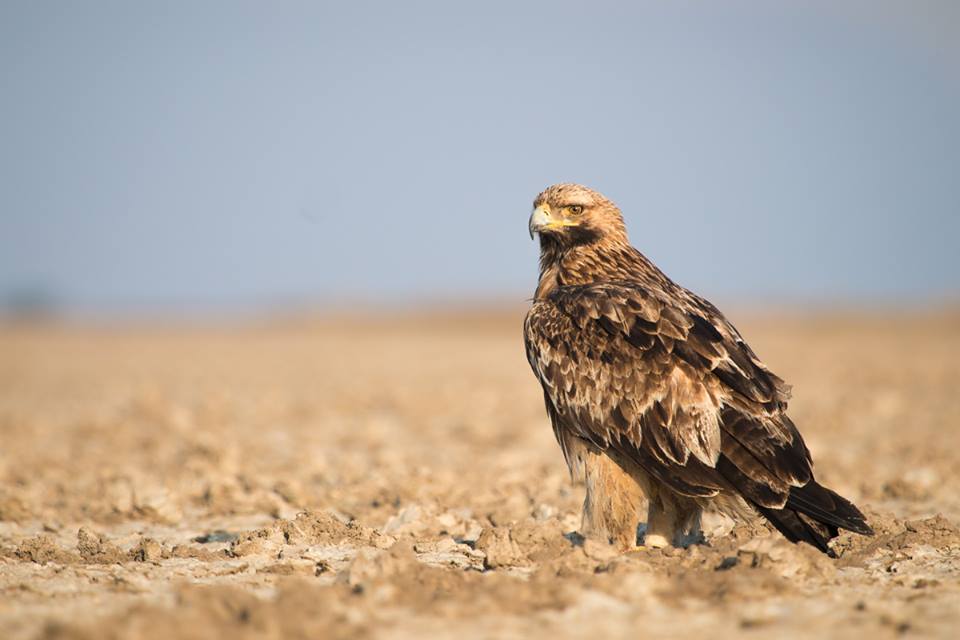Eastern imperial eagle: Red Data Book of Armenia

Hawks and eagles — Accipitridae
Status. A vanishing species. Listed in the IUCN Red List of Threatened Species (ver. 3.1) as Vulnerable VU C2a(ii). According to IUCN criteria categorized as Vulnerable VU C2a(ii).
Distribution. South of the European part of the former USSR, Kazakhstan, Altai Mts. and their foothills, Minusinsk forest–steppe, Lake Baikal region, South Caucasus, Turkmenistan, Tajikistan, Balkan Peninsula, Spain, North Africa, Southwest Asia. In recent times, the western and northern parts of its range have significantly shrunk. The eastern populations are quite stable.
Distribution in Armenia. Occurs mostly during the spring and autumn migrations and, possibly, occasionally winters in the country. In 1955, the aerie was first recorded in the Noemberian district, near the Airum village. It continued to nestle in this site in 1976 and was recorded in 1978 and 1979.
Habitats. Open grasslands alternating with sparse forests, orchards and tall trees in riversides. These habitats have greatly reduced because of their use in agriculture.
Biological traits. The aerie is usually placed on a tall tree, very seldom on the ground. The clutch consists of 1–3 eggs brooded by both parents, but mainly by female. The brooding period is 43 days. Fledglings start flying at the age of 2.5 months. Preys upon small mammals and birds, sometimes also feeds on orthopterans, others insects and carrion.
Population size and its trends. Available information is insufficient to judge about the population size.
Major threats. Possibly, reduction of prey base, destruction of nesting sites and poaching during migrations. Bird stuffing and sales. Agricultural use of toxic chemicals.
Conservation measures. Listed in Appendix I of the CITES. It is essential to identify and stringently protect the nesting sites throughout Armenia and to raise public awareness.
Suggestions
 The Ministry of Environment sent a letter international partners to draw their attention to the real danger of environmental disasters as a result of Azerbaijan's large-scale aggression towards the territory of Armenia
The Ministry of Environment sent a letter international partners to draw their attention to the real danger of environmental disasters as a result of Azerbaijan's large-scale aggression towards the territory of Armenia
 Vicia pisiformis: Red Data Book of Armenia
Vicia pisiformis: Red Data Book of Armenia
 Vavilovia formosa: Red Data Book of Armenia
Vavilovia formosa: Red Data Book of Armenia
 Trigonella capitata: Red Data Book of Armenia
Trigonella capitata: Red Data Book of Armenia
 Trigonella astroides: Red Data Book of Armenia
Trigonella astroides: Red Data Book of Armenia












